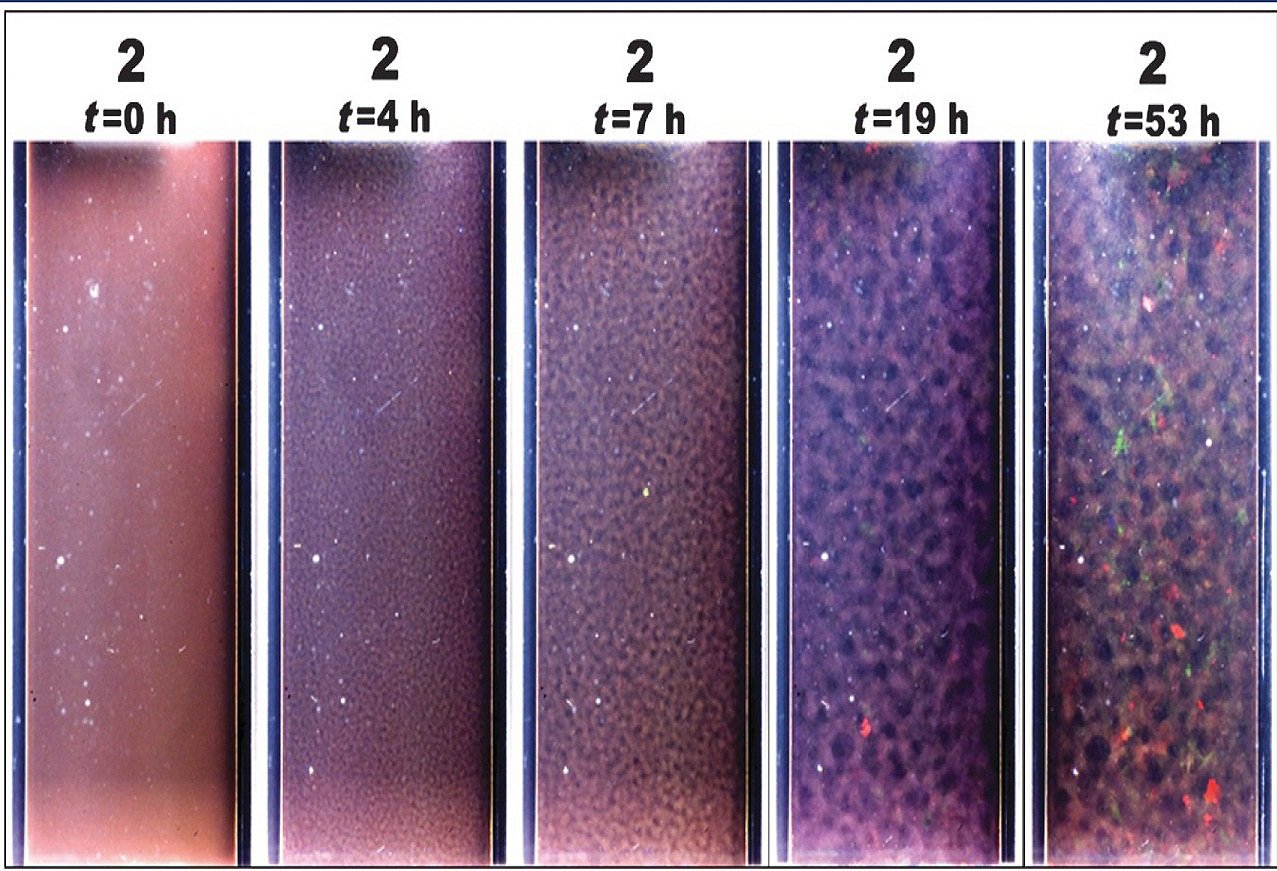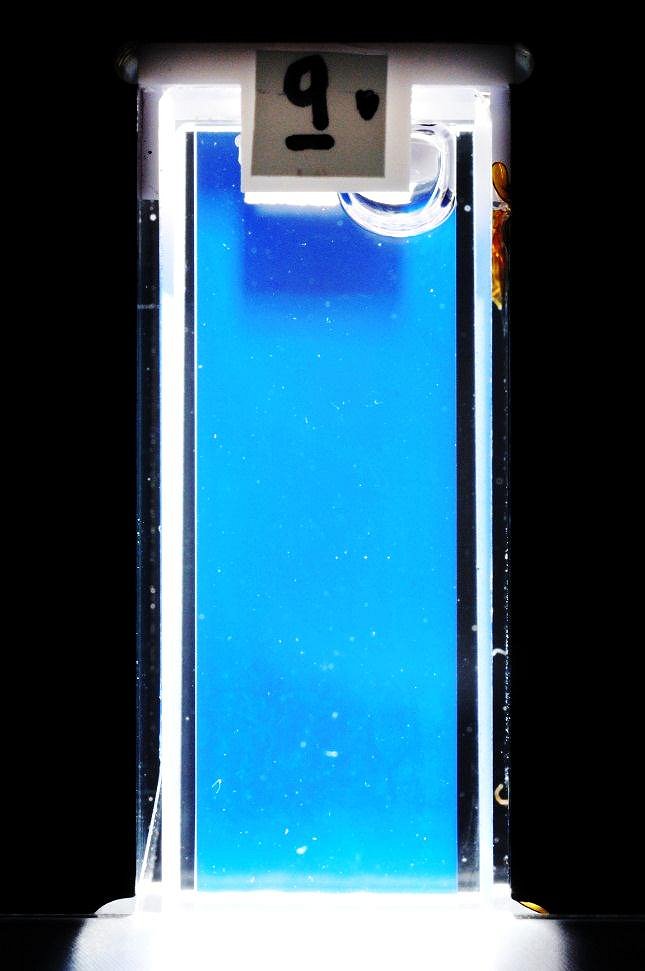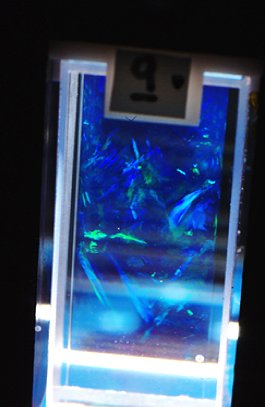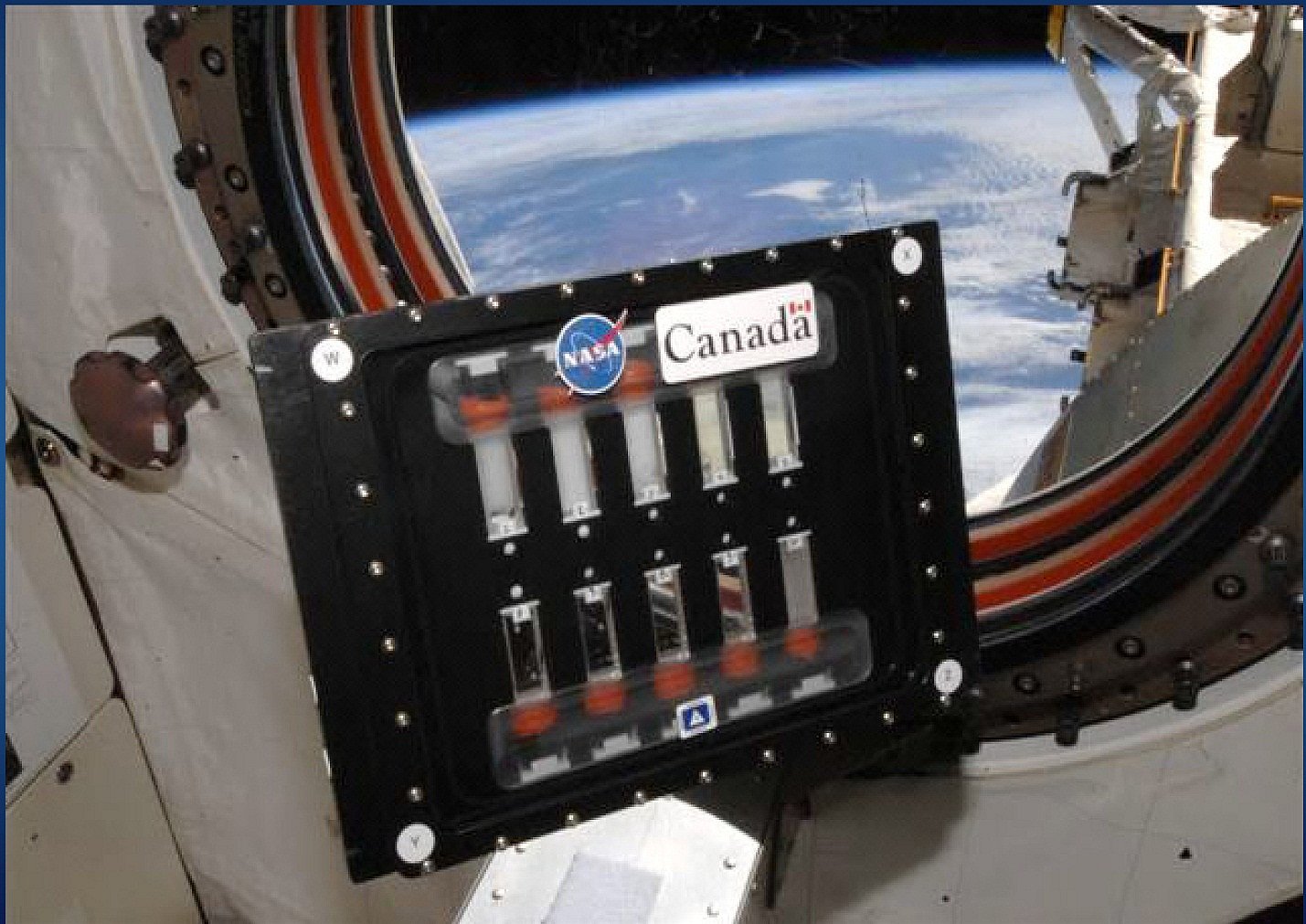Although it may not be herding cats exactly, all the NASA-supported Binary Colloidal Alloy Tests (BCAT) studies have ended on the International Space Station, and the experimental samples are being rounded up and returned to the participating scientists. The BCAT series of investigations aims to understand fluids and the physics behind their movement. This research might help in designing new stable products for consumers.
Getting the composition right to keep the various ingredients stable in many household products, such as fabric softener, can be challenging. This is especially true with gravity constantly tugging at the different parts of a solution because the heavy parts go to the bottom. The natural effects of gravity hinder not only product stability but also efforts to study how to counteract the issue and make things stay put. Researchers decided to remove that variable by doing these investigations aboard the orbiting laboratory of the space station where the motion of the particles can be observed without gravity interfering with the particle motion.
“Increased knowledge of some of the areas of this basic physical research may have future benefits in the application of the same physical processes on Earth. Supercritical fluids (fluids possessing properties of a gas and a liquid simultaneously) have numerous applications in a wide variety of fields,” said William Meyer, Ph.D., at NASA’s Glenn Research Center in Cleveland, who is a project scientist for the BCAT investigations. “An example is supercritical carbon dioxide, which represents a solvent that can perform a wide variety of extraction and processing duties, an environmentally friendly solution replacing less environmentally friendly solvents used in dry cleaning, decaffeination of coffee beans and extraction of delicate pharmacological molecules from plants for use in new drugs. The development and use of supercritical fluids is dependent on further understanding of the critical point of those fluids, which the BCAT experiments are providing.”
The BCAT investigations enable researchers to study the colloidal systems of microscopic particles of solids or gases dispersed in a liquid that make up the desired product formulations. Colloids are a type of homogeneous mixture. Although they are not as small as atoms, they can be made to behave like them.
“BCAT-3 is the first experiment to use the size advantages of colloids, which can be used as model atoms, to systematically and precisely locate (without the masking effects of gravity) the critical point in a colloidal system and characterize the behavior around it,” said Meyer. “These larger particles are not only large enough to scatter or diffract light that is visible to a camera (as well as the naked eye) as images or colors but also large enough to slow down the dynamics to speeds that allow us to photograph the phase separation of samples over a period of weeks.”
BCAT investigations on the space station began in 2004, and 40 experiments have been conducted during the past 10 years. Fifty percent of the tests studied phase separation of colloids in microgravity and their behavior near the critical point. A phase is a physical state of matter such as a gas, liquid or solid. Phase separation occurs when a mixture disassociates into its separate states, or phases, such as a solid separating from a liquid, for example sand in water. The critical point is where two phases are indistinguishable from one another. Above the critical point, the properties of the fluid change, and some of the behaviors of both the gas and liquid exist. This is called a supercritical fluid.
The microgravity experiments demonstrated the theoretical model for a critical point determination in a colloidal system gave unexpected results. Some of the samples created for the investigation separated above the expected critical point. If the samples had been above the critical point, they would not have separated into phases. This indicated that they were actually below the expected critical point because they separated into phases. More work needs to be done to understand these results, but this new data should enable scientists to understand better the theoretical model system used to predict phase separation – a predictor of product shelf-life.
The balance of the BCAT suite of experiments concerned factors affecting crystallization of colloids. Because of gravity on Earth, the particles (colloids) in a fluid settle to the bottom of the container and jam, losing their ability to diffuse. In space the particles are free to continue moving (often called Brownian motion). This free movement enables researchers to see and photograph how the colloids arrange themselves in solutions and how crystals form.
Varying the concentration of colloids, as well as whether the colloidal particles are large or small, all affect how colloids cluster, when they will crystallize and the size of the crystals. The right concentration of colloids suspended in a fluid with an added polymer, which causes what scientists call depletion attraction, can form crystals that eventually stabilize the system and arrest the phase separation of the colloids. By adding a mixture of small particles to the large-colloidal particle systems, the colloids can be tuned to form crystals. This is similar to building a scaffolding structure. The colloids form a stabilizing structure throughout the system that helps prevent separation of the phases. This scaffold structure extends the shelf life of the colloidal product by preventing separation of the components.
When large seed particles, about 10 times the size of the colloids, are added to a dense suspension of the smaller colloidal particles, formation of crystals can occur quickly with many small crystals. Depending on the concentration of the colloid and polymer, the mixtures simulate colloidal liquids, colloidal gas and colloidal crystals.
The BCAT suite of investigations and the study of colloidal systems resulted in a further understanding of the behavior of these solutions, leading to the improvement of industrial processes that depend on colloidal systems. Researchers are able to use this knowledge to extend their fields of study, creating novel materials through colloidal engineering. Although the original investigations modeled spherical particles, the most recent studies built on the original research to look at other shapes as well. New investigations using polystyrene spheres with DNA molecules as glue are laying the conceptual foundation for self-assembly and self-replication needed for nanotechnology production on a commercial scale. This is a new innovative process for the future manufacturing of nanoproducts.






























